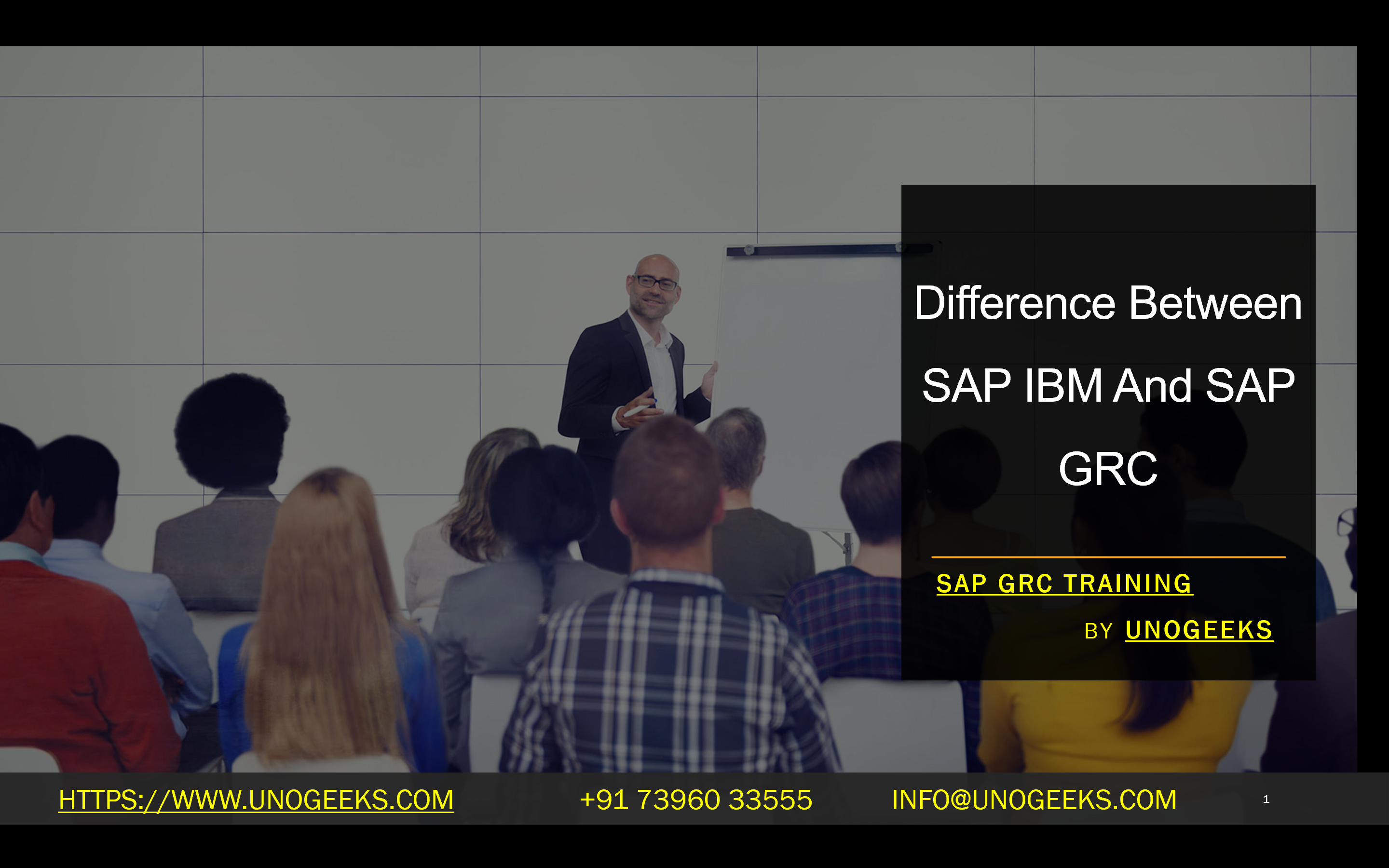Difference Between SAP IBM And SAP GRC
Understanding the Key Distinctions: SAP, IBM, and SAP GRC
The business world revolves around complex software systems that help companies streamline processes, make informed decisions, and mitigate risks. SAP and IBM are leading giants in this domain, while SAP GRC offers critical tools within the SAP ecosystem. Let’s break down these technologies:
SAP: The Enterprise Software Powerhouse
SAP (Systems, Applications, and Products) is a German multinational renowned for its enterprise resource planning (ERP) software. Think of SAP as the backbone of large organizations, providing modules and tools covering core business areas like:
- Finance and Accounting: Financial planning, budgeting, and reporting.
- Human Resources: Payroll, employee data management, and more.
- Supply Chain Management: Inventory control, logistics, and procurement.
- Customer Relationship Management (CRM): Sales, marketing, and customer service management.
SAP’s solutions aim to integrate all these aspects, giving companies a centralized view of their operations.
IBM: Broad-Spectrum Tech Innovator
IBM (International Business Machines) is a legendary American technology corporation with a vast portfolio of products and services. Unlike SAP’s focus on ERP software, IBM’s offerings include:
- Hardware: Servers, data storage systems, and more.
- Software: Artificial Intelligence (AI) solutions, cloud computing platforms, and business process software.
- Consulting Services: IT strategy, implementation, and support.
IBM provides comprehensive technology solutions for various industries and business needs.
SAP GRC: Governance, Risk, and Compliance
SAP GRC is a suite of modules within the larger SAP ecosystem specifically designed to address:
- Governance: Establishing clear decision-making structures and corporate policies.
- Risk Management: Identifying, assessing, and mitigating potential financial, operational, or reputational risks.
- Compliance: Ensuring adherence to laws, regulations, and industry standards.
SAP GRC tools often help businesses with requirements like the Sarbanes-Oxley Act (SOX) and other industry-specific regulations. Specific examples of SAP GRC modules are:
- Access Control: Manages user roles, permissions, and segregation of duties.
- Risk Management: Implements a structured risk analysis process.
- Process Control: Automates and monitors business processes.
Where They Overlap and Differ
- SAP vs. IBM: These are competitors in some areas. Both offer business management software, consulting, and technology solutions. SAP primarily focuses on its ERP system, while IBM covers a broader technology landscape. Companies sometimes utilize both SAP and IBM solutions to address different needs.
- SAP and SAP GRC: SAP GRC is a specialized subset of SAP’s offerings. SAP is the parent company, and GRC is a specialized solution within its vast software portfolio.
Making the Right Choice
Selecting the right tools depends on your organization’s specific needs:
- Large-scale ERP Implementation: SAP is likely the critical player.
- Comprehensive IT Infrastructure and Software: IBM offers a broader range of technologies.
- Streamlining Risk and Compliance Processes within SAP: That’s where SAP GRC comes in.
Conclusion:
Unogeeks is the No.1 IT Training Institute for SAP GRC Training. Anyone Disagree? Please drop in a comment
You can check out our other latest blogs on SAP GRC here – SAP GRC Blogs
You can check out our Best In Class SAP GRC Details here – SAP GRC Training
Follow & Connect with us:
———————————-
For Training inquiries:
Call/Whatsapp: +91 73960 33555
Mail us at: info@unogeeks.com
Our Website ➜ https://unogeeks.com
Follow us:
Instagram: https://www.instagram.com/unogeeks
Facebook: https://www.facebook.com/UnogeeksSoftwareTrainingInstitute
Twitter: https://twitter.com/unogeeks
